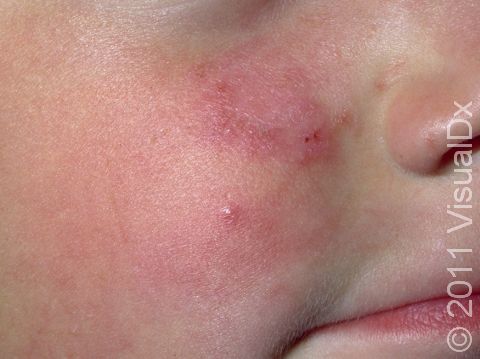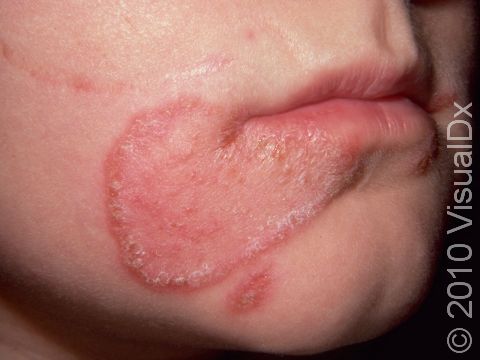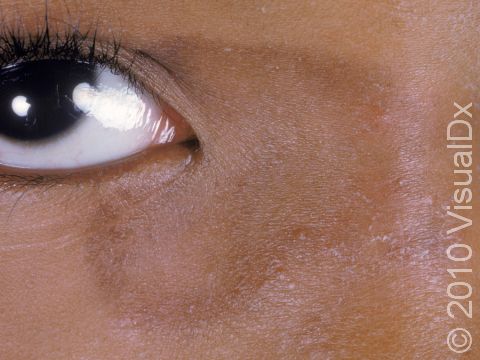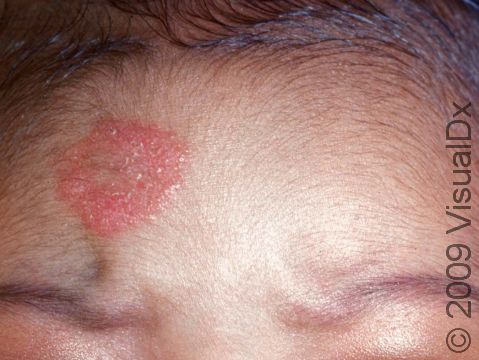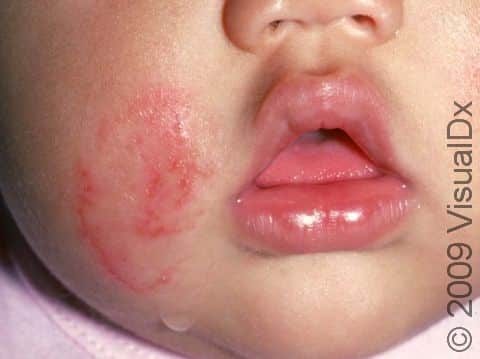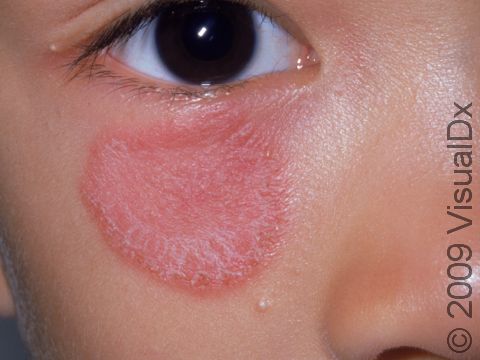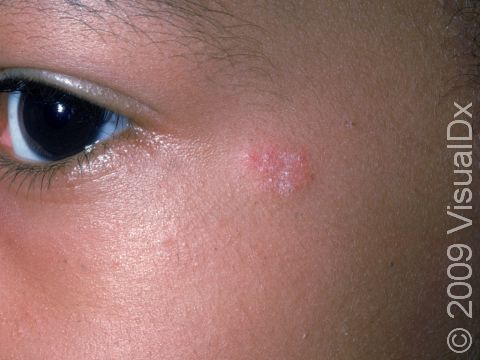Ringworm, Facial (Tinea Faciei)
Tinea faciei is the medical name for ringworm on the face. Tinea, commonly known as ringworm, is a fungal infection that appears as a dry, red, elevated, and scaly lesion that enlarges in a circular fashion. It is caused by a fungus from the Trichophyton species, and the natural habitat for this fungus is in the soil. Facial ringworm is itchy, and scratching it may cause the lesion to spread further, across the cheeks and chin. This infection is often confused with other itchy, red rashes on the face, such as atopic dermatitis or eczema.
Who's At Risk?
Facial ringworm affects both sexes and all populations and ages, although it is quite common in children. Typical to fungal infections, ringworm is more common in warm and humid climates. Facial ringworm is often found on the cheeks of children and infants and can be spread by direct contact with affected individuals or by contact with infected animals. A common way that ringworm is spread is through a new pet (for example a kitten adopted from a shelter) that has the infection. When the child holds the kitten near his or her face, the child becomes infected with the spores and the fungus spreads.
Signs & Symptoms
The most common locations for facial ringworm include:
- Cheeks
- Nose
- Around the eye
- Chin
- Forehead
Facial ringworm appears as one or more pink-to-red, scaly patches ranging in size from 1–5 cm. The border of the affected skin may be raised and may contain bumps, blisters, or scabs. Often, the central portion of the lesion is clear, leading to a ring-like shape and the descriptive (but inaccurate, because there is no actual worm) name ringworm.
Facial ringworm is almost always itchy, and it may become itchier or feel like a burn after exposure to the sun.
Self-Care Guidelines
If you suspect that your child has facial ringworm, you might try one of the following over-the-counter antifungal creams or lotions:
- Terbinafine
- Clotrimazole
- Miconazole
Apply the cream to each lesion and to the normal-appearing skin 2 cm beyond the border of the affected skin for at least 2 weeks until the areas are completely clear of lesions.
Since people often have tinea infections on more than one body part, examine your child for other ringworm infections, such as in the groin (jock itch, tinea cruris), on the feet (athlete’s foot, tinea pedis), and anywhere else on the body (tinea corporis).
Have any household pets evaluated by a veterinarian to make sure that they do not have a dermatophyte infection. If the veterinarian discovers an infection, be sure to have the animal treated.
Treatments
To confirm the diagnosis of facial ringworm, your child’s physician might scrape some surface skin materials (scales) onto a glass slide and examine them under a microscope. This procedure, called a KOH (potassium hydroxide) preparation, allows the doctor to look for tell-tale signs of fungal infection.
Once the diagnosis of facial ringworm is confirmed, your physician will probably start treatment with an antifungal medication. Most infections can be treated with topical creams and lotions, including:
- Terbinafine
- Clotrimazole
- Miconazole
- Econazole
- Oxiconazole
- Ciclopirox
- Ketoconazole
- Sulconazole
- Naftifine
Rarely, more extensive or long-standing infections may require treatment with oral antifungal pills, including:
- Griseofulvin
- Terbinafine
The infection should go away within 4–6 weeks after using effective treatment.
Visit Urgency
If the lesions do not improve after 1–2 weeks of applying the over-the-counter antifungal creams, see your child’s doctor for an evaluation.
References
Bolognia, Jean L., ed. Dermatology, pp.1179. New York: Mosby, 2003.
Freedberg, Irwin M., ed. Fitzpatrick’s Dermatology in General Medicine. 6th ed. pp.1998. New York: McGraw-Hill, 2003.
Last modified on August 16th, 2022 at 2:44 pm

Not sure what to look for?
Try our new Rash and Skin Condition Finder
